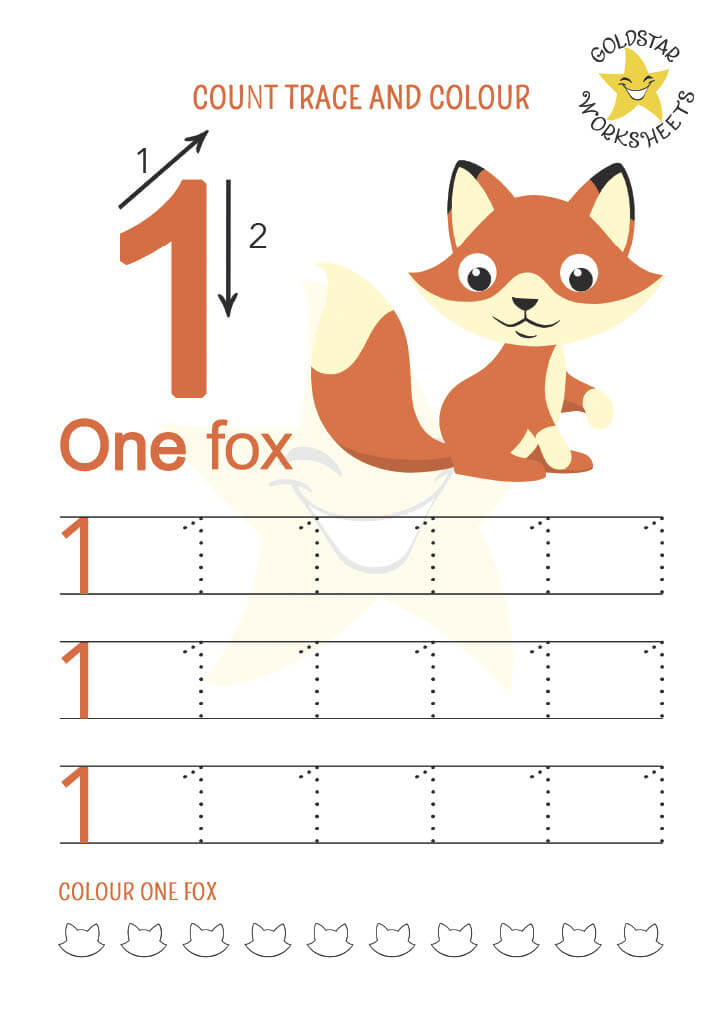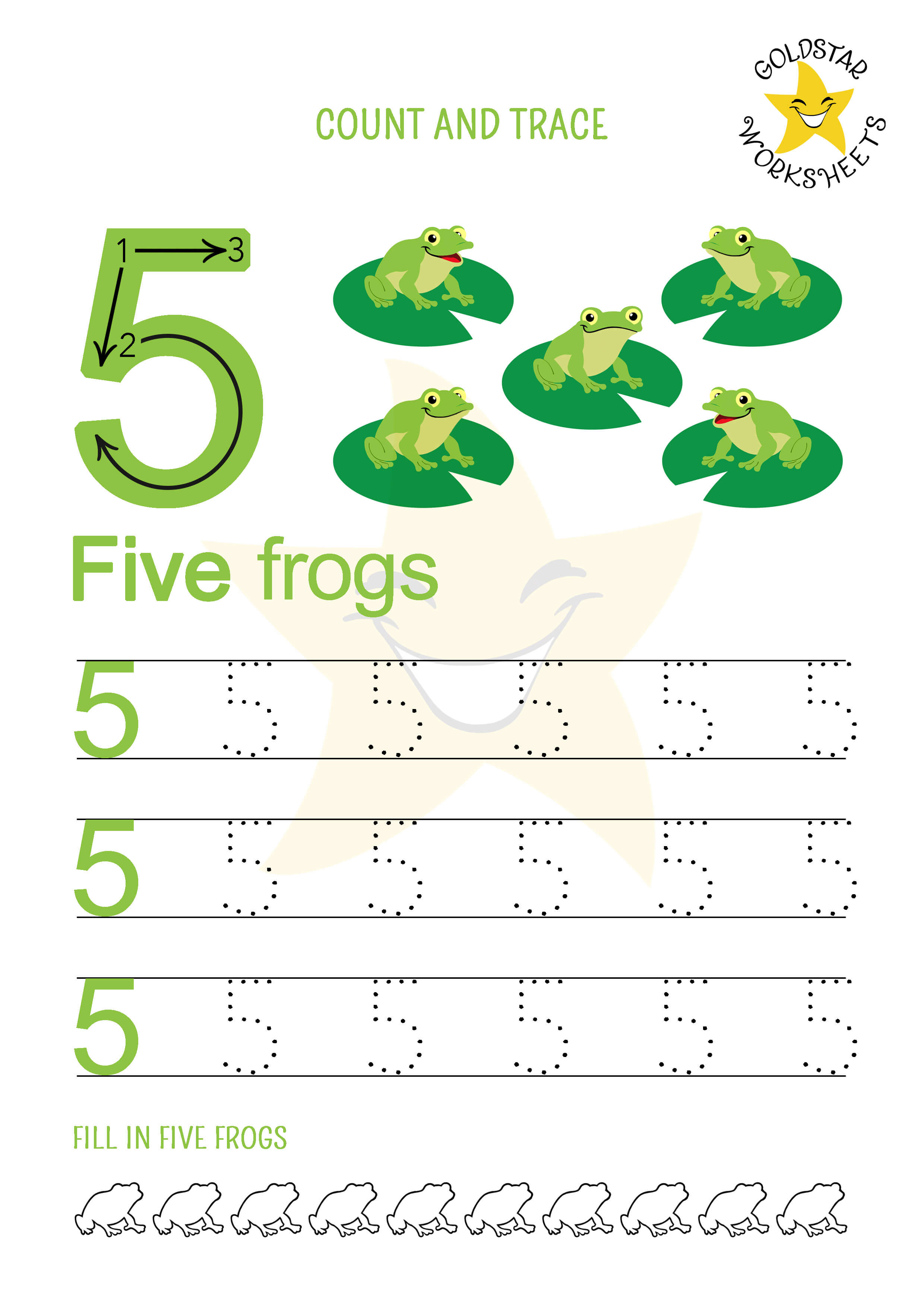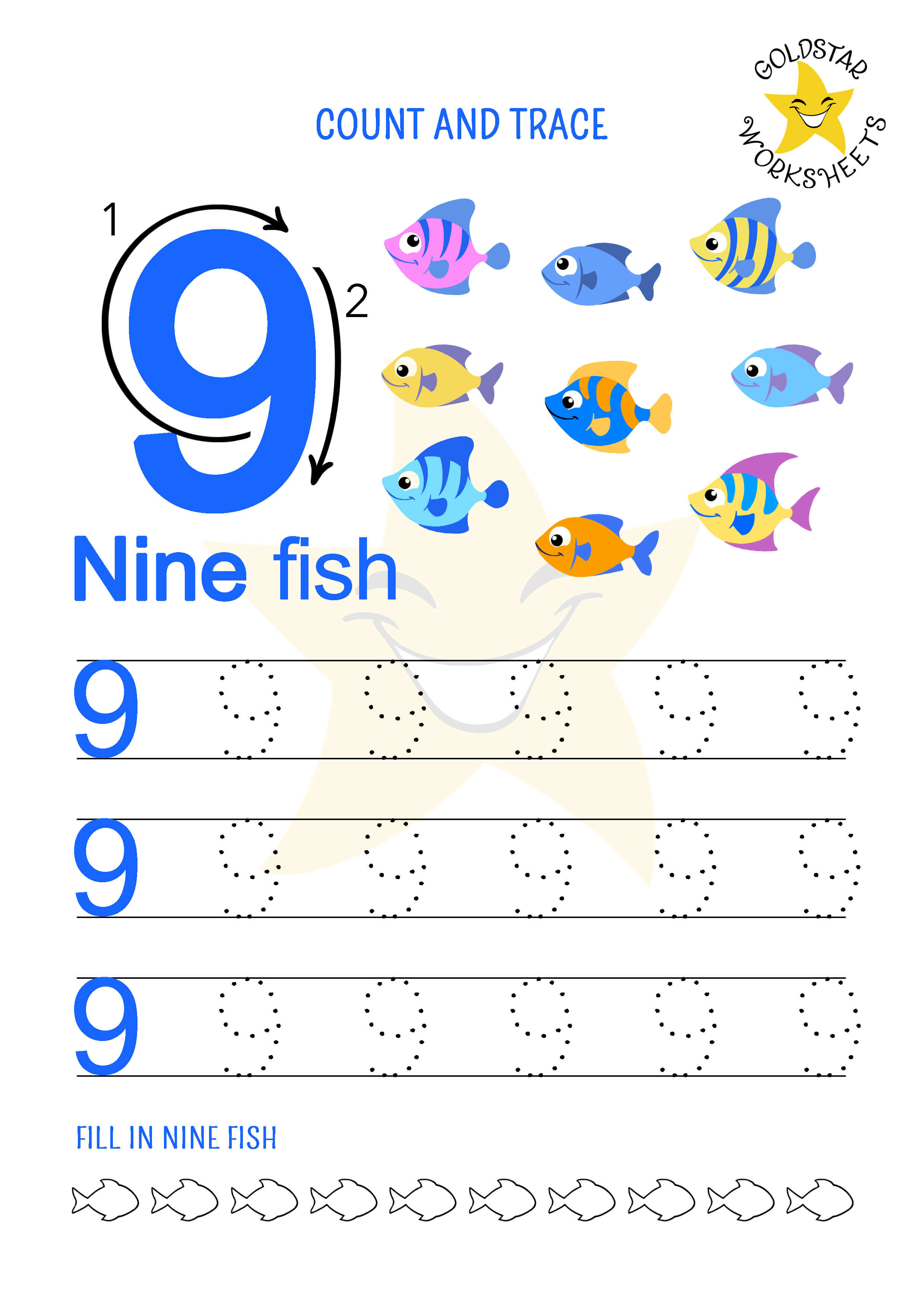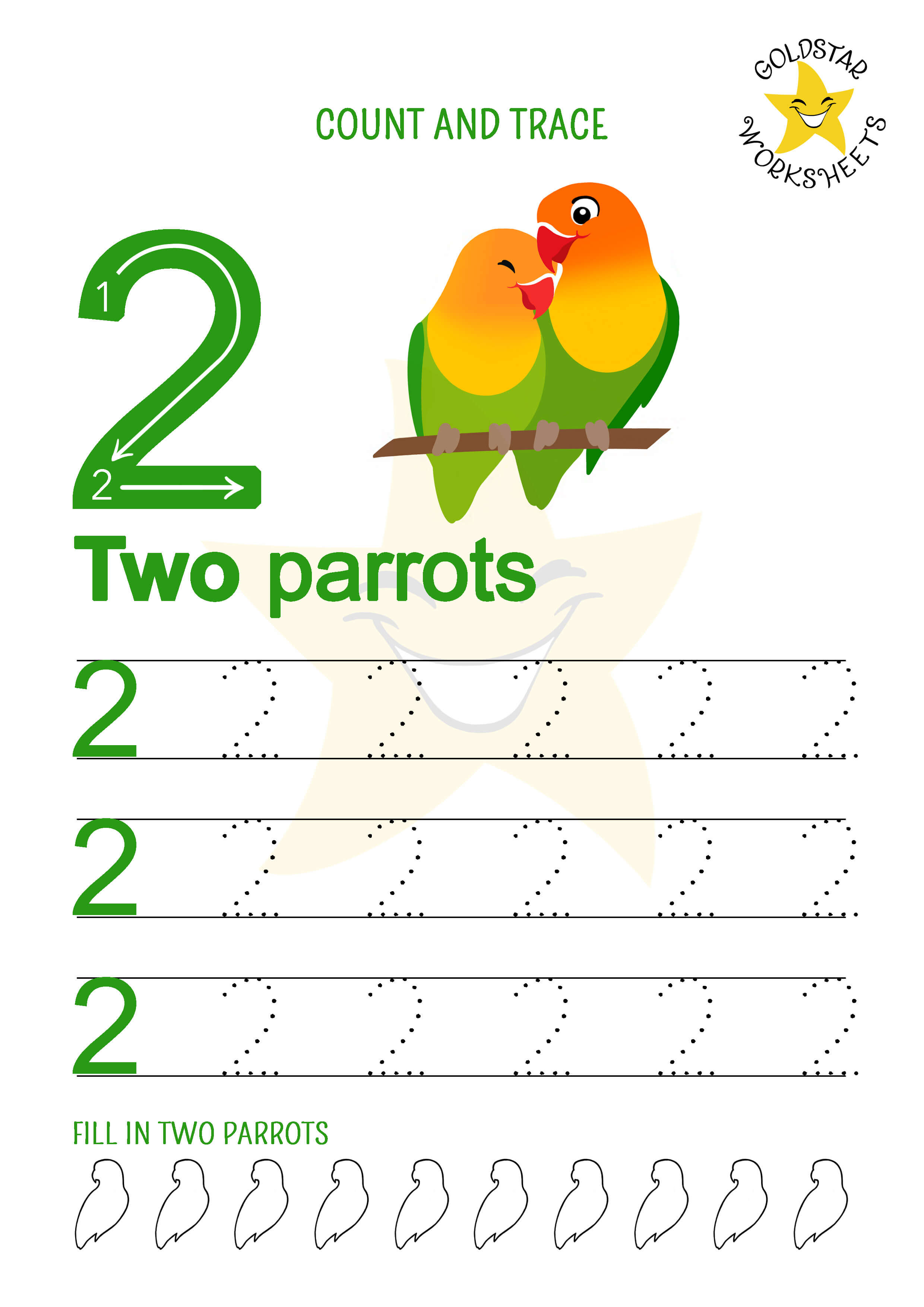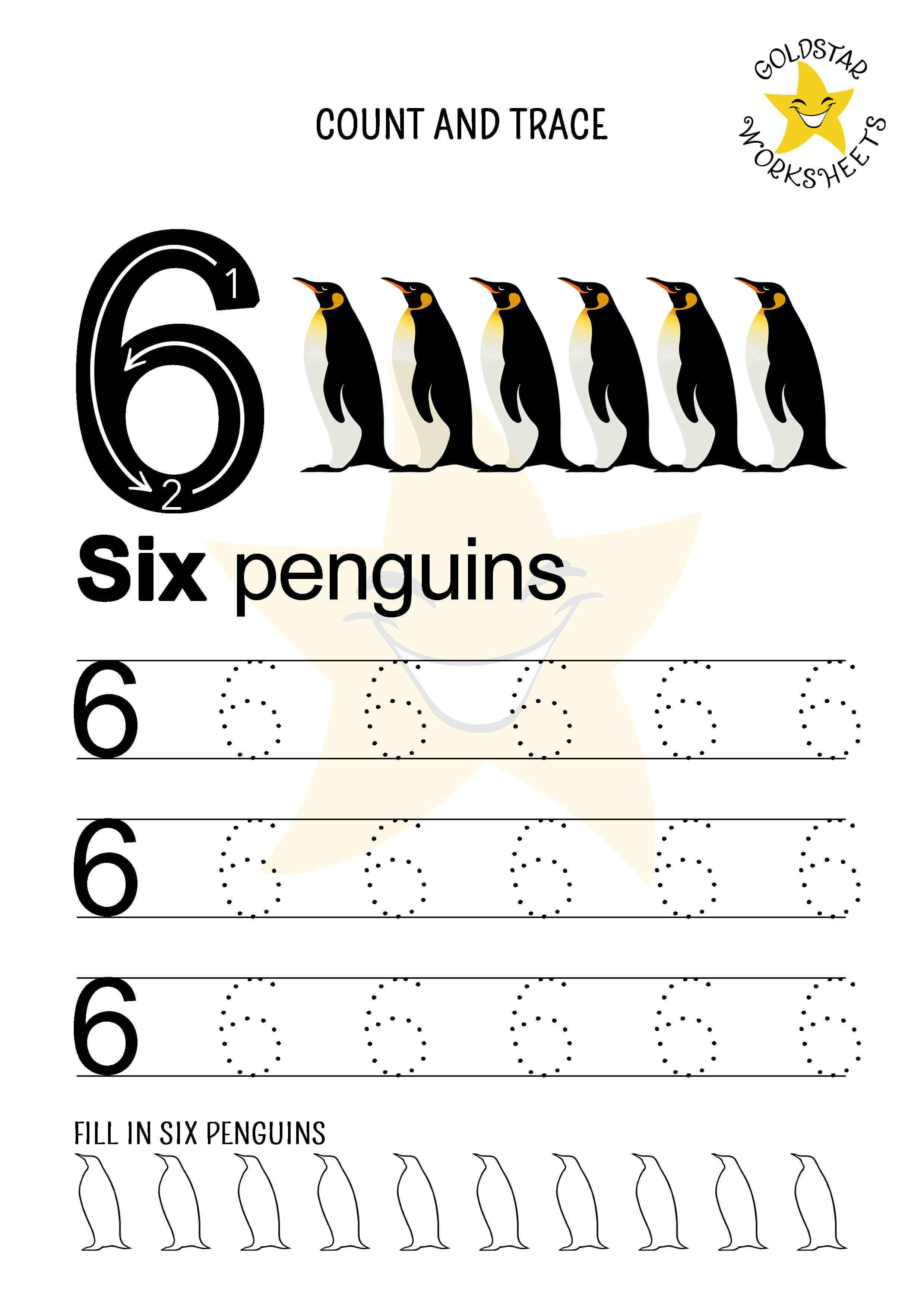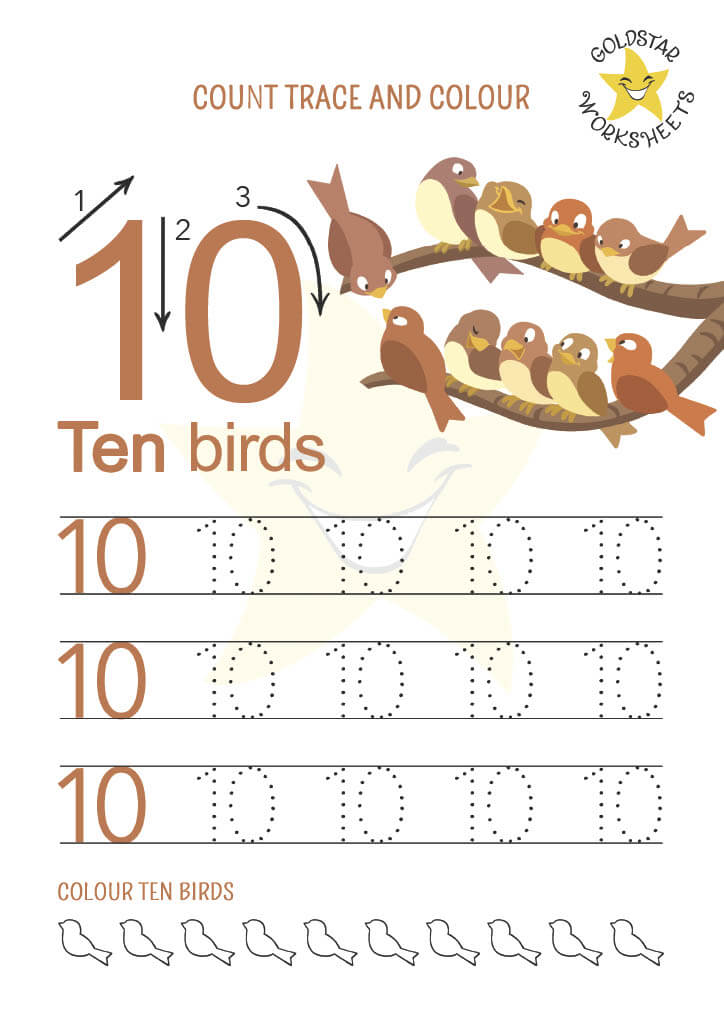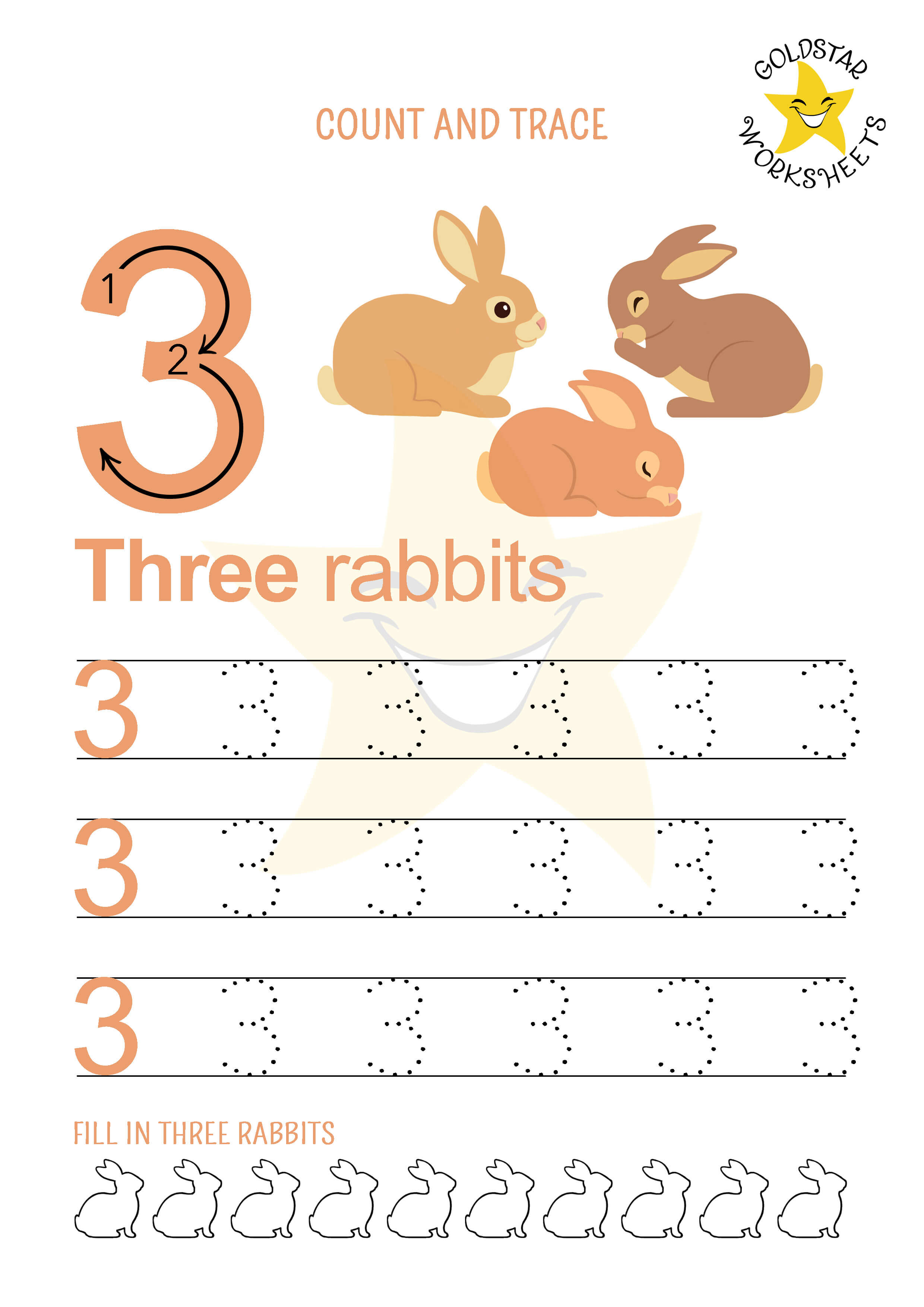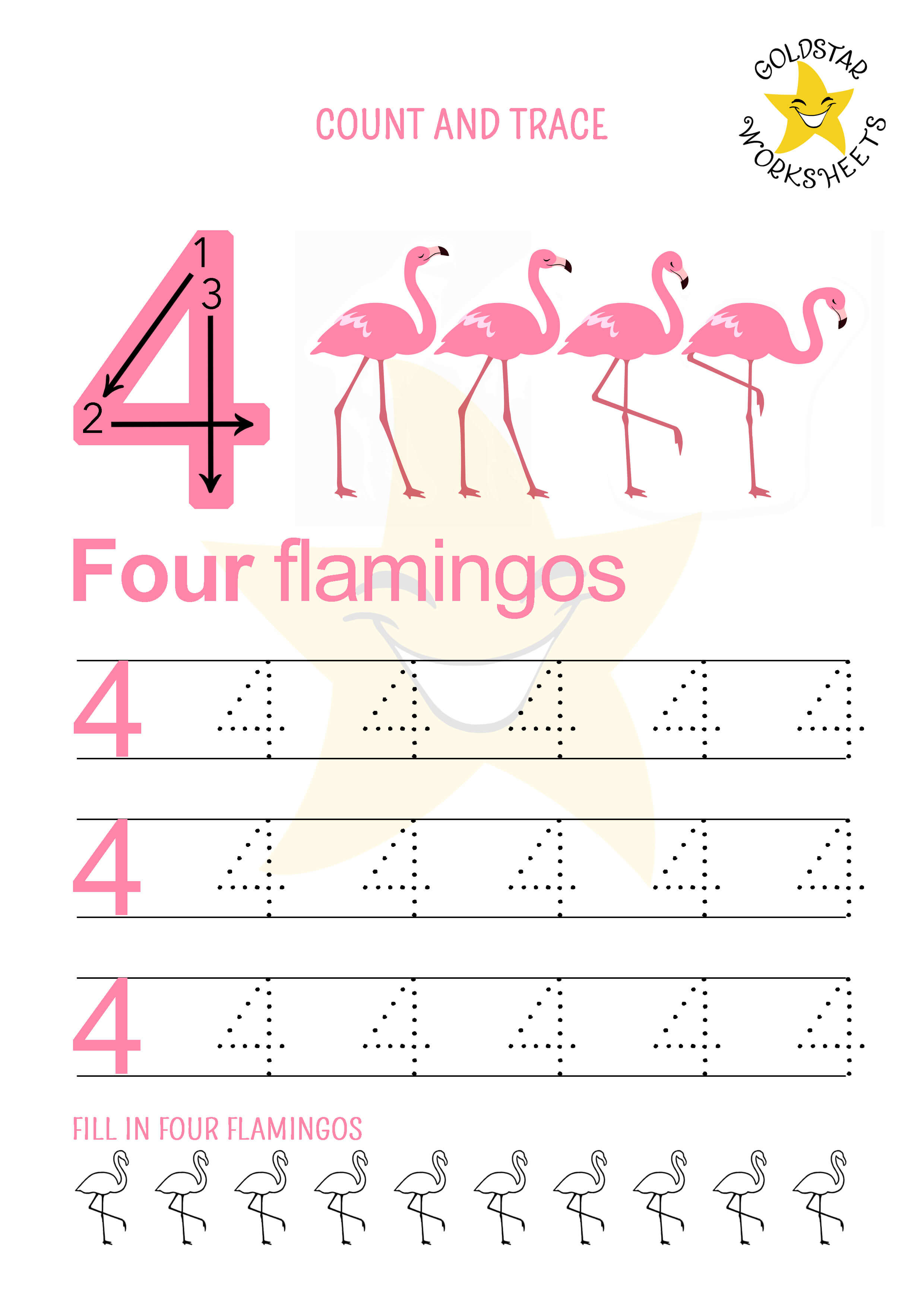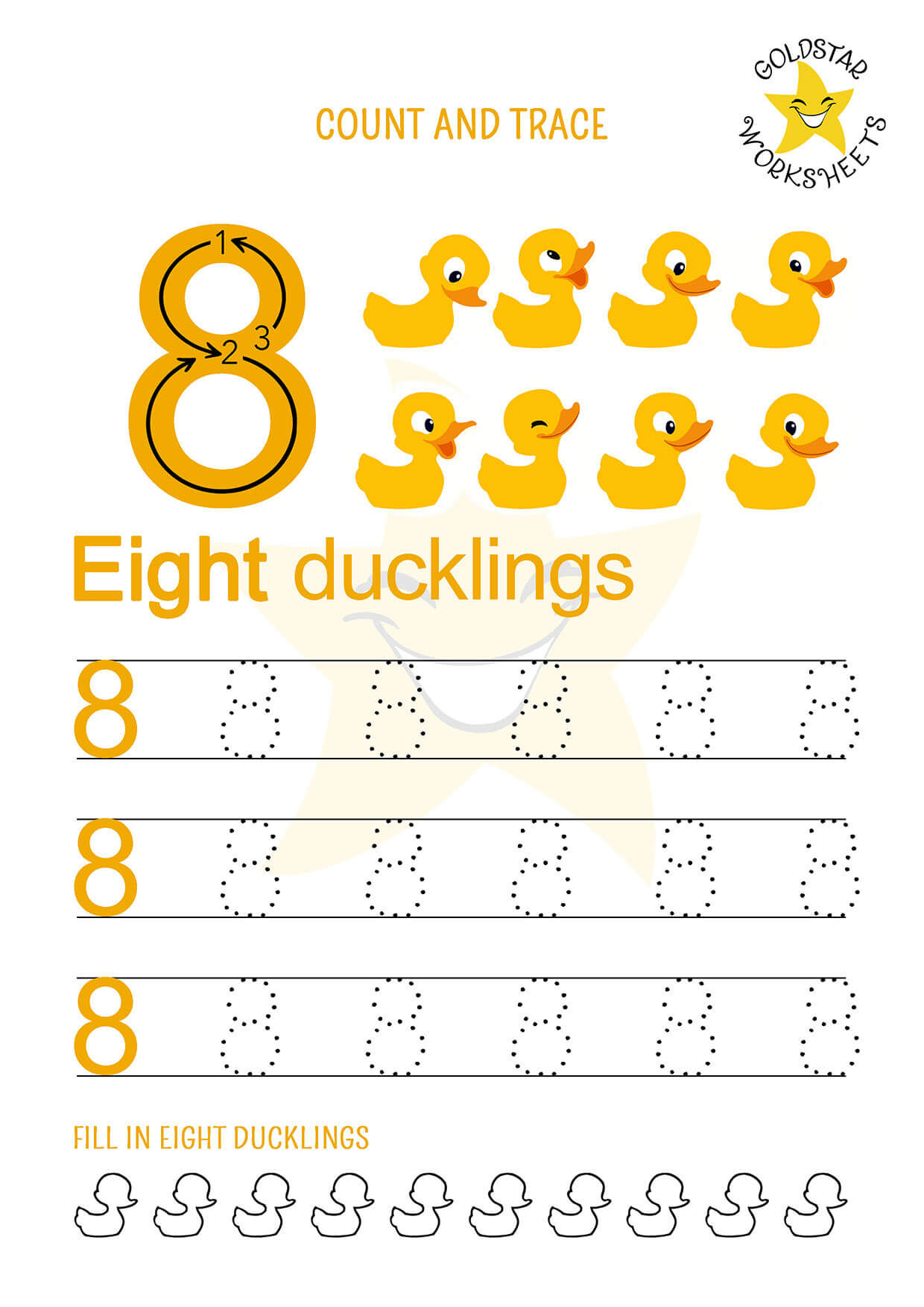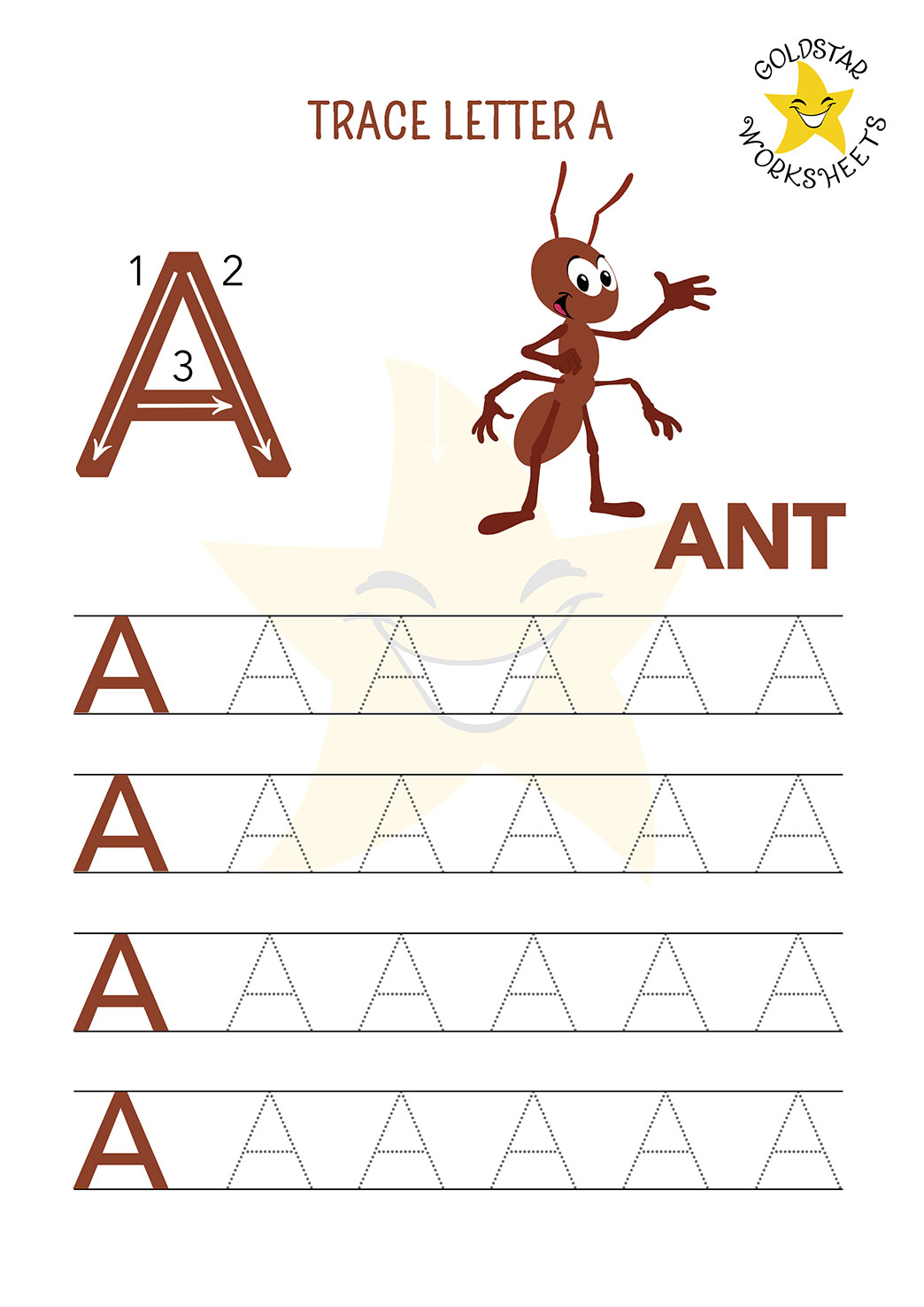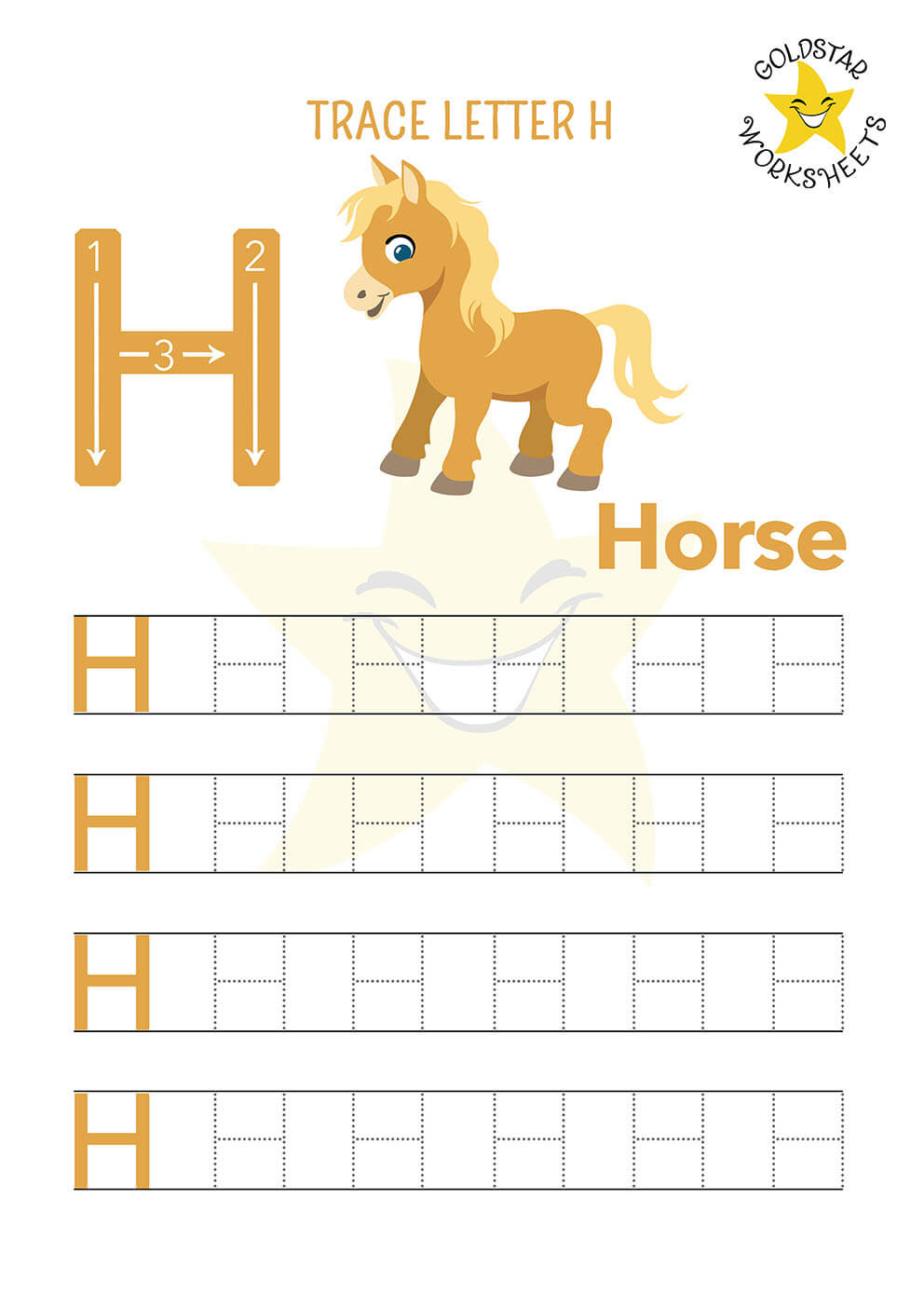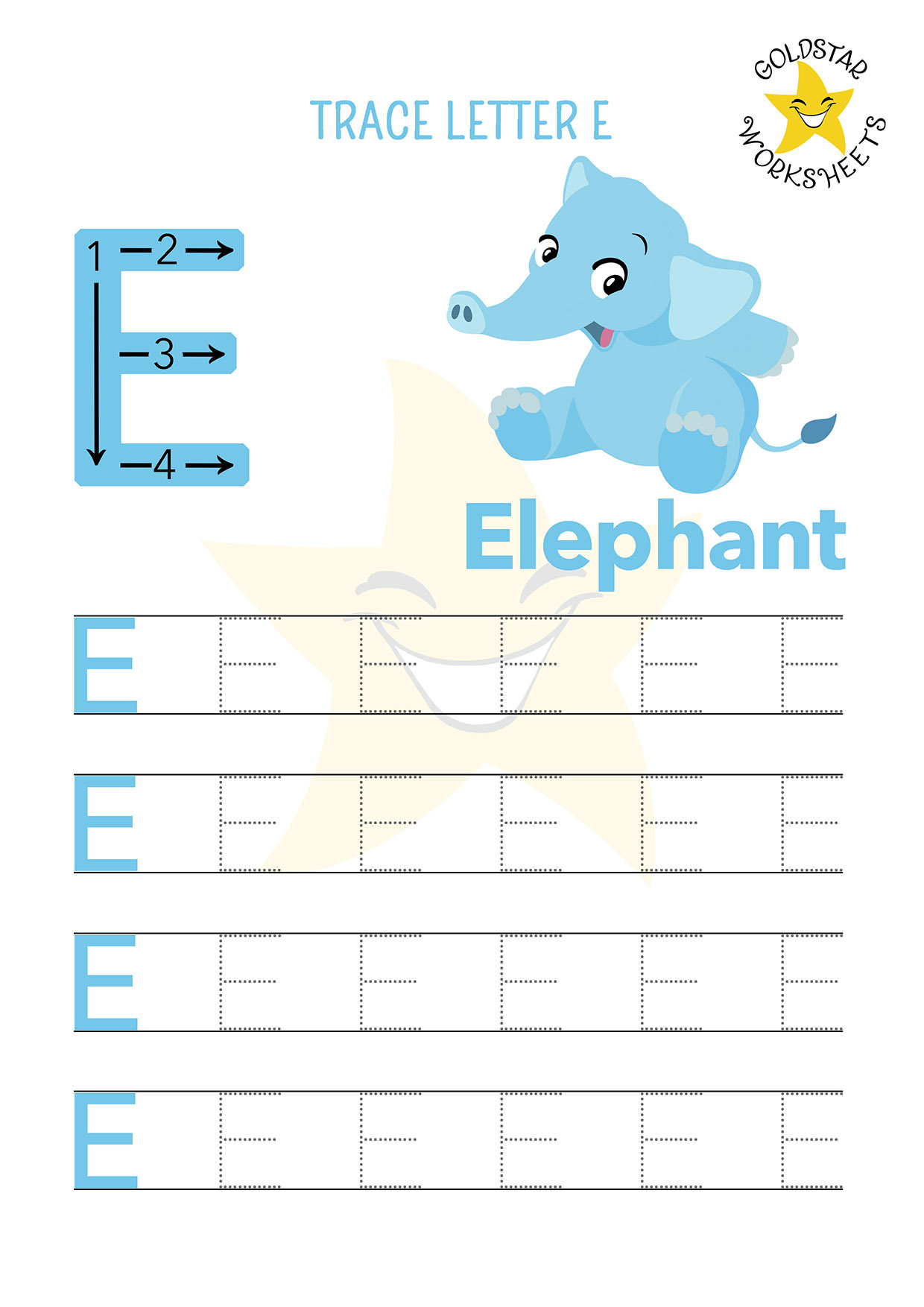- Home
- Numbers
Free Printable Number Tracing Worksheets for kindergarten
All our worksheets are designed by a children's illustrator, and a teacher/psychologist...they're all free because we're committed to closing the equality gap in children's education.
About these free printable number tracing worksheets
How to use OUR NUMBER TRACING WORKSHEETS
These worksheets can be used to practice writing numbers easily by following the dots with a pen or pencil. kids can practice counting by pointing at the animals, and each one includes a bit of relaxing coloring. How slowly can they go?
The letter formation arrows show the ideal order and direction of each stroke of the pen. We recommend demonstrating this first. For example, by drawing slowly on the stroke guidance arrows while saying "1...…", "2...…", and "3...…". In this way kids form a connection between the stroke instructions and the attempts to write. Children will benefit from seeing it done many times, and if possible, by different people.
You can use these 1-10 worksheets in your lessons as a teacher or for a little extra practice at home as a parent. Teacher's may also give them as homework.
We recommend putting your kids great work up on the wall or the fridge etc. A reminder of their effort, progress, and learning.
How long does it take to trace a number?
As writing a number is a new developmental step and draws on significant focus, attention, and skill, tracing a single number can easily take up to 20-40 seconds. Trying to hold the pen in a comfortable way, considering where to place the pen first, checking the guidance, attempting to move the pen, re-checking. There will be re-adjustments along the way. Some children may want it to be accurate and will go more carefully. Others may enjoy doing it faster. Each child will go about it differently so it's important to allow for different ways.
Good Practice for Handwriting
The national handwriting association created this useful poster with lots of checks and success factors to guide your learning journey with your kids.
How about letting them decide what to focus on first? Ask them which one they'd like to explore?
If for example, pressure is interesting to them, you could demonstrate light, heavy, and medium pressure. You can ask them helpful questions to raise awareness, like, how does your pressure feel?
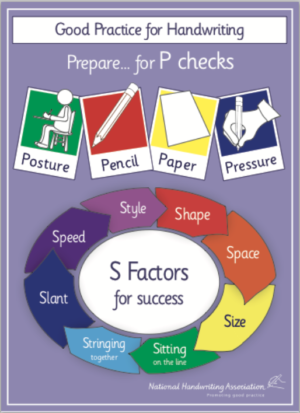
About our designs
we've found that preschool and kindergarten kids react well to these worksheets. Each one has been crafted slowly and with care so that children new to number learning have a positive experience.
Kids tend to like and respond well to the fun and friendly animal designs. Imagine a child watching a cartoon that was designed in the way some worksheets are! I can't imagine they'd stick with long.
Working one to one with children learning to trace numbers
It's worth remember how big a challenge this is for a child... It's the equivalent of us trying to learning Chinese! Holding this in mind will help with much needed patience.
When you spot those little wins, try and praise the things you'd like to see more of. How she was curious, how he was trying to count in the park, her effort, how he didn't give up and kept going when it was tough. If kids can link their progress to what they did well, thoughts, actions, and strategies, it will make them more determined.
"Well done" will feel good, which matters, but it's even better if it comes with concrete praise about things they did that worked. Plus praising kids in this way will mean there's less need for nagging, which I suspect no one likes doing.
One thing to try and avoid is praise like "my little genius" and "your so clever". Although well-meaning, it creates pressure and inevitable disappointment in future efforts. This can create a situation where the child is being told how smart they are but they feel like a failure.
Numbers, counting, and the link with everyday life
The free printable number tracing worksheets above will help your children become more familiar with numbers... They'll help your kids develop their understanding.
Life is packed full of opportunities to count and recognise numbers. Bath time... dinner time (and dessert time of course!)... while cooking... while out and about... Ignite their curiosity with guessing games (how many sweets in the bag?), sing songs and tell stories (even if they are made up ones), and generally have fun with it. How many hairs can I pull out of my nose? How many poo's did the dog do? The more fun it is, the more they will enjoy it, remember it, and want more of it!
Of course, your strengths of kindness and fairness will help you to get that just-right level of challenge, and your creativity, humour, and love will enable you to make it fun! Good luck!
Do you have a favourite worksheet? I think mine is the parrot one, or maybe the duckling one...
We'd love to hear from you on our social media platforms or our contact page.
- Home
- Numbers
Paper Saving Tip
How about laminating these worksheets so you can use them again and again? Simply use a dry-erase marker and wipe off after use with a wet cloth. Great for the classroom, home-schooling, or for lots of practice at home.
We appreciate that schools around the world all work in different ways, at different paces, and do things in different orders. We acknowledge that many different ways of learning can work well, different approaches being more suitable in different cultures and contexts. We believe that sooner is not better than later, and faster is not better than slower. We wish to support everyone in the way they work so if you work differently and we can help, please do get in touch.
